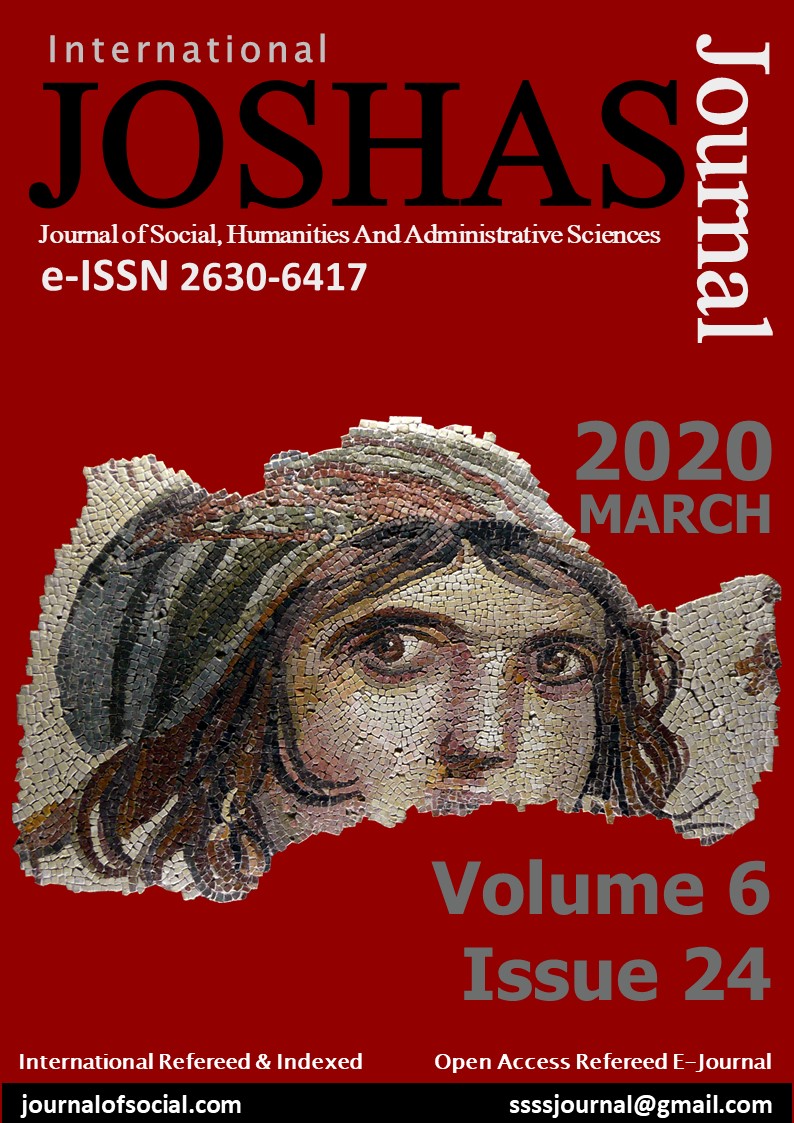Author :
Abstract
Temel ihtiyaca yönelik üretilmiş seramiklerin ilk örneklerine rastladığımız neolitik dönemden 20.yüzyılın başlarına kadarki süreçte seramik, çoğunlukla pratik işleviyle ön planda olmuştur. Fakat Endüstri devrimiyle birlikte değişen üretim sistemleri ve üretilen seramiklerin estetik kaygılardan uzak oluşu, Arts and Crafts (İngiltere) hareketi başta olmak üzere birbiri ardına pek çok hareketin doğuşuna yol açmıştır. Bunlardan biri olan Bauhaus hareketinde pratik, estetik ve sembolik işlevin sorgulanması, estetik kaygılarla tasarlanan işlevsel formların üretilmesine de destek olmuştur. Seramiğin; Duchamp gibi farklı disiplinde bir sanatçının elinde, herhangi bir işlevsel kaygı olmaksızın sadece yaratıcı gücün kurallarıyla özgürce tasarlanması, hazır-yapım bir sanat nesnesi olarak yorumlanması, birçok seramik sanatçısına yön vermiş, 1960 sonrası Postmodern süreçte, seramik sanatçılarının işlevsel kaygılardan uzak formlar üretmelerine katkı sağlamıştır. Düşüncenin öncül işlevin ardıl olduğu bu dönemde, pratik ve sembolik işlevden ziyade, estetik işlevin ön plana çıktığı, kişisel, sosyal, toplumsal ve/veya politik söylemi olan seramikler üretilmiş, Paul Scott gibi bazı çağdaş seramik sanatçıları bu yaklaşımın öncüleri olmuştur.
Keywords
Abstract
From the Neolithic period to the beginning of the 20th century, the first examples of ceramics produced for the basic needs were mostly in the forefront with their practical functions. However, the production systems that changed with the Industrial Revolution and the fact that the ceramics produced were free of aesthetic concerns led to the emergence of many movements one after the other, especially the Arts and Crafts (England) movement. In the Bauhaus movement, which is one of these, the questioning of practical, aesthetic and symbolic function has also supported the production of functional forms designed with aesthetic concerns. Ceramics; In the hands of an artist of different disciplines such as Duchamp, without any functional concern, it was freely designed by the rules of creative power, interpreted as a ready-made art object, and later led many ceramic artists. . In this period in which thought was the successor of the primary function, ceramics with a personal, social, and political discourse were produced rather than practical and symbolic function, and some contemporary ceramic artists such as Paul Scott became the pioneers of this approach.
Keywords
- Aygün, S. (2019). Seramik Sanatında İşlev, Çanakkale Onsekiz Mart Üniversitesi Sosyal Bilimler
- Aygün, S. (2019). Seramik Sanatında İşlev, Çanakkale Onsekiz Mart Üniversitesi Sosyal Bilimler Enstitüsü Seramik Anasanat Dalı, Yüksek Lisans Tezi, Çanakkale.
- Savaş, U.T. (2009). Seramik Sanatında Boşluk, Sanat & Tasarım Dergisi, 1(3), 105-116, Eskişehir. https://www.academia.edu/32295572/Seramik_Sanatında_Boşluk (Erişim Tarihi: 15.01.2020).
- Sevim, S. & Yıldırım, Ö. (2014). Çağdaş Türk Seramik Sanatında Resimsel Anlatım, Sanat &Tasarım Dergisi, 7(7), 61-74, Eskişehir. https://dergipark.org.tr/en/download/article-file/192492 (Erişim Tarihi: 15.01.2020).
- Tansuğ, S. (1993). Sanatın Görsel Dili, Remzi Kitabevi, İstanbul.Tunalı, İ. (2002). Tasarım Felsefesine Giriş, Yem Yayın, İstanbul.
- Yılmaz, M. (2006). Modernizmden Postmodernizme Sanat, Ütopya Yayınevi, Ankara.İNTERNET KAYNAKLARI URL-1.
- http://tdk.gov.tr/index.php?option=com_gts&arama=gts&guid=TDK.GTS.5cbc2125e64f51.354663 64 (Erişim Tarihi: 21.09.2019).
- URL-2. http://www.peeruk.org/archive/#/paul-scott (Erişim: 20.04.2019).
- URL-3. https://cumbrianblues.com/tag/contemporary-ceramics/ (Erişim Tarihi: 20.04.2019).
- URL-4. Made in the Middie’30 http://madeinthemiddle.org/makers/zoe-hillyard/72.html (Erişim Tarihi: 16.04.2019).
- URL-5. https://www.sanatilan.com/blog?journal_blog_post_id=150 (Erişim Tarihi: 23.04.2019).
- URL-6. https://sanatkaravani.com/ronit-barangadan-rahatsiz-edici-realist-bir-calisma/ Erişim Tarihi: 14.01.2019





